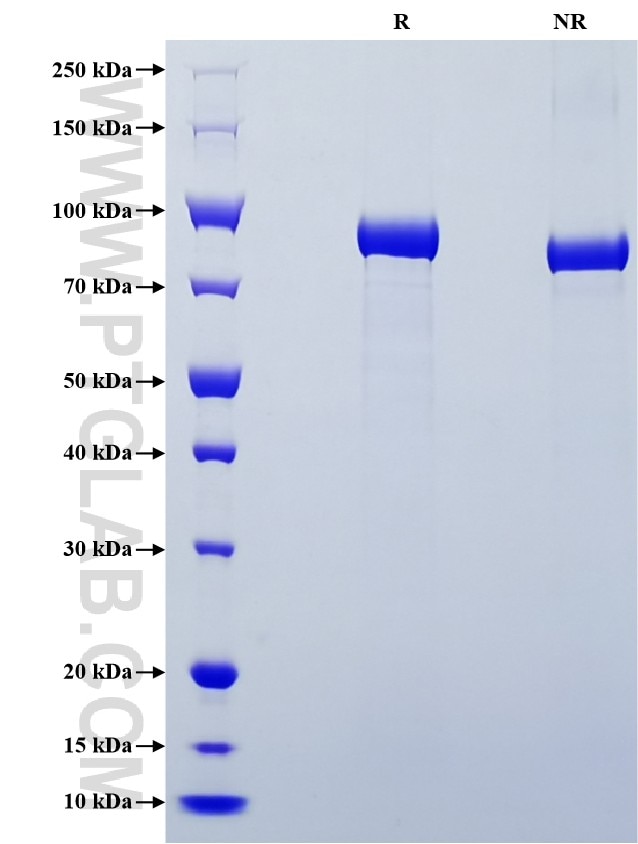Recombinant Mouse Myeloperoxidase protein (His Tag)
Species
Mouse
Purity
>90 %, SDS-PAGE
Tag
His Tag
Activity
not tested
Cat no : Eg0702
Validation Data Gallery
Product Information
| Purity | >90 %, SDS-PAGE |
| Endotoxin | <0.1 EU/μg protein, LAL method |
| Activity |
Not tested |
| Expression | HEK293-derived Mouse Myeloperoxidase protein Met16-Thr718(Accession# AAR99349) with a His tag at the C-terminus. |
| GeneID | 17523 |
| Accession | AAR99349 |
| PredictedSize | 81.2 kDa |
| SDS-PAGE | 83-95 kDa |
| Formulation | Lyophilized from 0.22 μm filtered solution in PBS, pH 7.4. Normally 5% trehalose and 5% mannitol are added as protectants before lyophilization. |
| Reconstitution | Briefly centrifuge the tube before opening. Reconstitute at 0.1-0.5 mg/mL in sterile water. |
| Storage Conditions |
It is recommended that the protein be aliquoted for optimal storage. Avoid repeated freeze-thaw cycles.
|
| Shipping | The product is shipped at ambient temperature. Upon receipt, store it immediately at the recommended temperature. |
Background
Myeloperoxidase (MPO) is a heme-containing enzyme primarily found in neutrophils and certain monocytes, playing a crucial role in the innate immune system. MPO generates reactive oxygen species (ROS), such as hypochlorous acid, which are essential for killing pathogens during phagocytosis. Additionally, MPO is a key component of neutrophil extracellular traps (NETs), which capture and kill extracellular pathogens. However, MPO can also contribute to tissue damage and inflammation when released from activated neutrophils. Elevated MPO levels have been associated with various diseases, including cardiovascular diseases and neurodegenerative disorders like Alzheimer's disease.
References:
1. Wright, Joy R et al. Journal of Alzheimer's disease : JAD vol. 89,4 (2022): 1483-1492. 2. Aratani, Yasuaki. Archives of biochemistry and biophysics vol. 640 (2018): 47-52. 3. Strzepa, Anna et al. Cellular immunology vol. 317 (2017): 1-8. 4. Jannesar, Kosar, and Hamid Soraya. Biochemical and biophysical research communications vol. 755 (2025): 151578.

